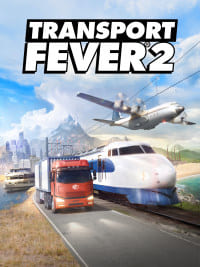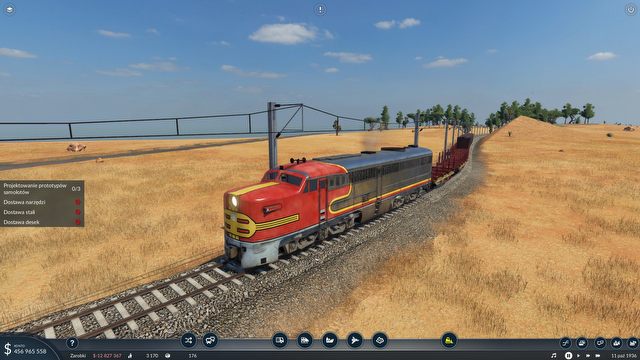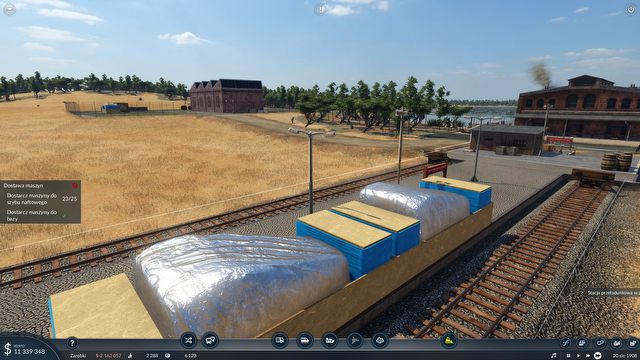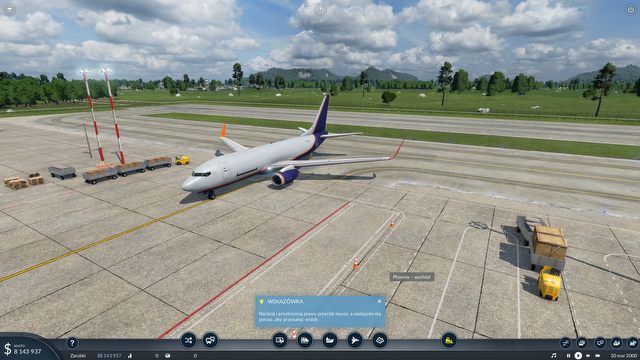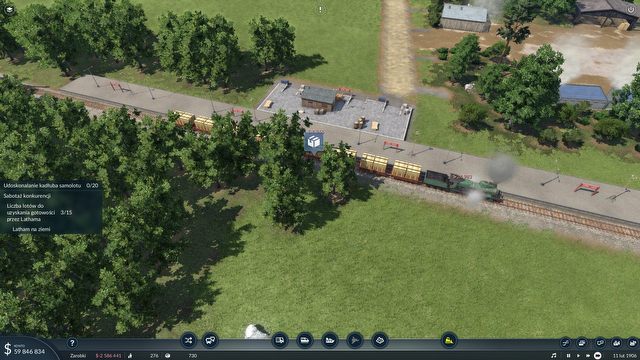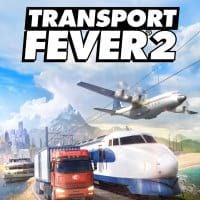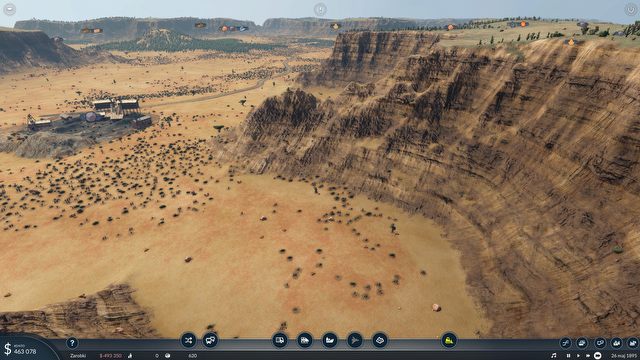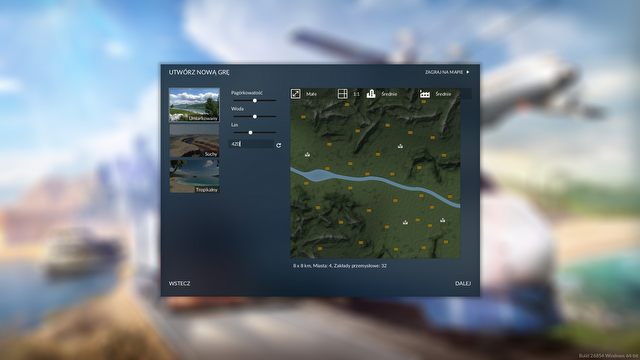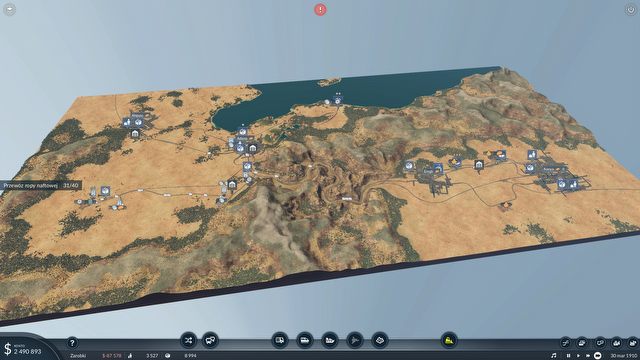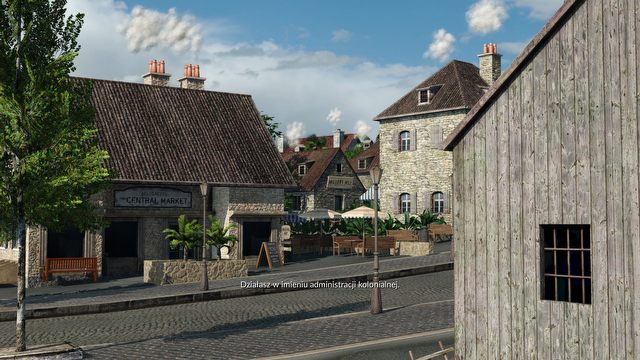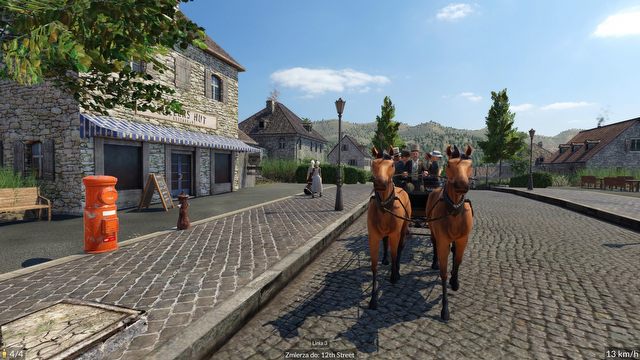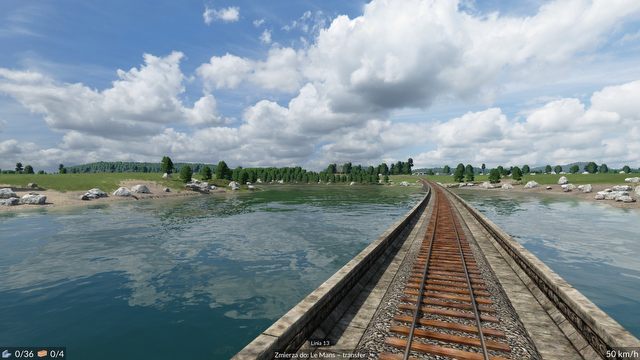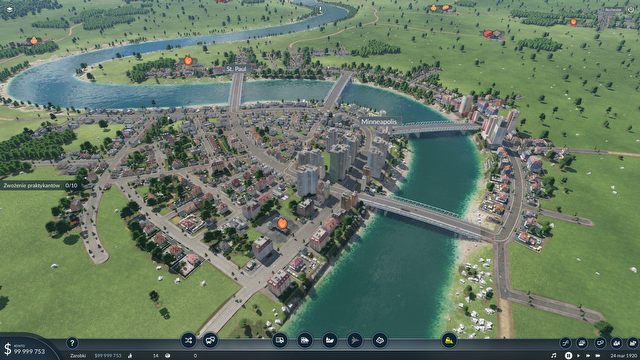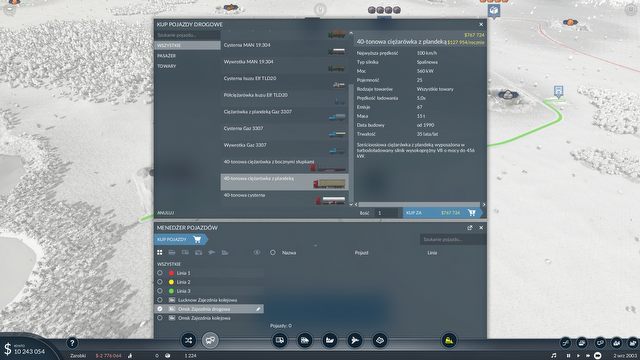Transport Fever 2 Review - Good Sim; Poor Tycoon
Three years seems about enough time to pin-point the shortcomings that stop a good game from being great. Have Urban Games managed to do just that, and is their new Transport Fever 2 a game to match the legendary Transport Tycoon?
The review is based on the PC version.

Transportation of people and goods makes for an excellent material for an economic game. The combination of business with the construction of an efficient logistics network poses a many interesting challenges. The most important issue is to make good use of that potential.
- the fun of building an extensive logistics network
- very aesthetic and large maps
- tons of realistic vehicles
- well-thought-out urban and business development
- many useful changes in the mechanics
- economy is still neglected
- boring, monotonous and meaningless tasks in the campaign
- no AI-controlled opponents
In the last two years, different studios have become increasingly interested in this theme – in addition to the "Fever" series, the beginning of this year also brought the mediocre Railway Empire, and just a couple of weeks ago, Railroad Corporation was released. But the golden days of Transport Tycoon, Industry Giant or Traffic Giant still cast a long shadow on the genre – these games used to be extremely riveting experiences, capturing players for long hours, and are still considered unmatched, tycoon paragons.
The first installment of Transport Fever from 2016 met with a fairly optimistic reception of critics, although I personally felt it deserved a score of around 6/10, considering there were no AI-controlled opponents, and that the the economic layer of the game had some serious flaws. Despite its shortcomings, the game has become quite a treat for fans of transport and logistics, ready to forget its purely tycoon shortcomings, compensated with extensive capabilities in terms of developing the logistic network, and comprehensive modding support. The announcement of the new Transport Fever warranted hopes for an overhaul of the predecessor's underdeveloped aspects, the economy in particular. Is that indeed the case?
Boxes and containers
In Transport Fever 2, just as in the first part, we become the head of a logistics enterprise – using land, air and water transportation channels, we move various goods, as well as passengers, across large maps. The game runs on the same, albeit modified, engine as the predecessor, so everything looks very familiar to anyone who's had any contact with the first part.
The changes in the game's mechanics really introduce a lot of changes. Each city now accepts only two kinds of goods – one for the industrial zone, and the second for the commerce. The third element, universal for every city, are, of course, passengers. On top of that, the developers gave us some really interesting tools for upgrading stations. We can expand every stop to our heart's content with ready-made elements such as walkways, terminals, platforms or piers. With these, and a host of smaller tweaks, TF2 provides even more fun for players keen on creating complex transportation networks.
Of course, all the advantages of the first game were preserved in this aspect, so we still get a very interesting, realistic flow of materials, which are all "physically" present on the map. This is complemented with a complex rail network with check points, and multi-stage logistics utilizing different modes of transport. Unfortunately, the outdated railway construction system wasn't improved – we still have to manually construct every part of it; a system that would allow setting a quick blueprint of a rail track and then introducing neccesary changes would have been much more confident. Another disappointment stems from the fact that the goods we're transporting do not fit the era that the player is in. There are plastic factories in 1850, and the year 2000 doesn't bring any electronics.
The catalogue of more serious problems with the mechanics is expanded by limited capabilities of managing loading of goods – we can not, for example, send a train that will collect a certain number of goods from several consecutive stations, since cars always carry as many resources as they can hold. Of course, we can build a train from different types of cars, however, the problem remains unsolved if the goods that we'd like to collect from different stations are transported by the same type of cars. Similarly, the capabilities for distributing and coordinating vehicles on a single line are equally limited.
Full rolling stock
Transport Fever 2 offers us three different biomes – tropical, dry and moderate, and, adequately, as many types of rolling stocks – European, American, and Asian. We can choose from a variety of realistic vehicles – from early horse-drawn carriages and steamers to modern jet aircraft. The close-up camera on vehicles allows you to admire the beautiful, detailed models, and it's possible to "mount" the camera on them for a first-person effect. This element is much more satisfying than in TF1, as the creators have greatly improved the aesthetic qualities of the game world. I admit that, having in mind the mediocre environments from the first game, I was actually surprised at how beautiful landscapes could be created on this engine – with much better optimization, to top it off. In addition, cities and towns that grow and develop as we progress also look great.
A novelty in the second part is the map generator for the free mode – the worlds created by it can be customized to our needs. However, these creations aren't incredibly interesting; they resemble a rather random collection of cities and enterprises scattered across not very diverse territories. However, it shouldn't be a problem in a few months – because I'm sure the gaming community will fill the Steam workshop with extraordinary creations.
One of my complaints about the first game was poor design of the interface, which made it pretty hard to locate important information among the clutter of windows overloaded with useless data. In this respect, Transport Fever 2 makes considerable improvements. But it's still far from perfect – it requires a lot of clicking, and many of the individual windows could be combined into multi-functional panesl (for example, the windows of routes and vehicles, which require constant switching).
By the way, as it's often the case in economic strategies, the background music in the game is best suited for being quickly removed and replaced with a decent playlist.
Bad money
Considering the excellent logistics system and the reasonable framework of the industry, beautiful views and detailed vehicles, it's a pity that the potential of all this fine content is not fully realized. The problem is actually a pair of two separate issues – the ill-conceived and opaque economy system and unimpressive game modes.
The economy exists in a very rudimentary form. There's no information about which variables determine the payment for completed transport. As a result, our enterprise operates in complete darkness. According to my observations, there is a simple formula at work here – the quantity multiplied by distance without a clear connection with the type of goods transported. From this follow numerous absurdities, making the system very reductive – it's more viable to bet on the same resources, since complex products simply come in significantly smaller quantities. On top of that, the misguided distance multiplier makes it (counter-intuitively) more profitable to carry cargo from the most distant locations, even if the supplies of the same thing can be found much nearer. To add insult to injury, this system doesn't change at all as we progress through the centuries in the game. Prices and profitability of transportation do not change, there are no random economic events, and the production of plants does not change adequately to the changing epochs.
The second component of the gameplay issue is what I call the game modes disaster. In Transport Fever 2there's no artificial intelligence – again! Because of this, the game is simply boring as a tycoon, and only offers substantial challenge on high difficulty level. Perhaps the long, campaign, consisting of 18 missions divided into three chapters, offers any respite? Who have you that idea?! The missions are basically reduced to purely logistical problems, usually very simple – get X amount of products from point A to point B. Then, there's the mostly daft narration in side quests, which, by the way, boil down to clicking on some points on the map (and not in the way that can make tycoons captivating) – you can see the devs wanted to attempt something similar to the successful system from Ubisoft's Anno 1800. What completely buries the economic layer of the game is the absurd amount of money we begin the game with. As a result, the campaign plays as if we just used a cheat for unlimited money. I thus recommend staying away from this mode, maybe apart from a few starting, tutorial scenarios.
So what remains? Sandbox for lovers of designing complex transportation systems. It's better than nothing, and many players will find this satisfactory enough to get interested in the latest release from the feverish stable. Still, teeth grind, eyes swell with tears, and hamsters stop running around in their reels upon witnessing a game with such a giant potential for becoming the best transport tycoon in history join the mediocre tier due to not having enough time or desire to refine the core elements.
What goes up must come down
For me, Transport Fever 2 is a genuine and painful disappointment. When a game is just bad, you can vent frustration in a review and put it back on the shelf. But it's different here. The latest release from Urban Games builds an impressive edifice of complex logistics, interesting mechanics, and beautiful, big maps. And then the effect is just spoiled by poor finish – stupid economy and bland game modes.
The new Transport Fever will certainly find a large audience of fans of transport in the sandbox formula, but the players looking for managing their business and solving economic problems will be hugely disappointed. But, as always, I still have some hope. Maybe the next game will meet the expectations. Fingers crossed!
ABOUT THE AUTHOR
I've spent about 25 hours in Transport Fever 2. I tried to bore the campaign, but after completing half of it, I felt more inclined to chew across the table out of boredom than to see it through. The free mode was moderately enjoyable.
DISCLAIMER
We received a copy of the game from the publisher.
Transport Fever 2
Transport Fever 2 Review - Good Sim; Poor Tycoon
Three years seems about enough time to pin-point the shortcomings that stop a good game from being great. Have Urban Games managed to do just that, and is their new Transport Fever 2 a game to match the legendary Transport Tycoon?
